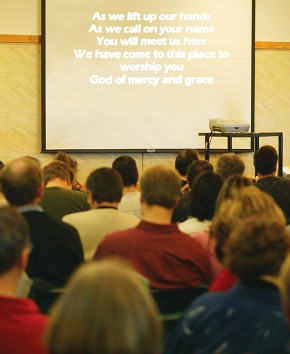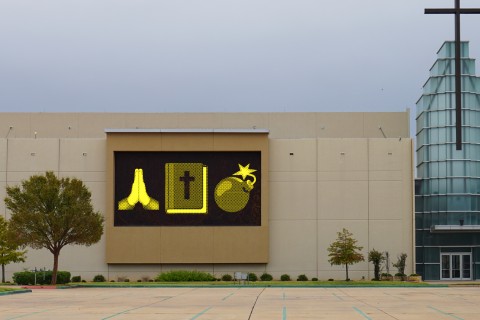Screen time

I’ve been screening churches in my new city of Vancouver, and I guess you could say they’ve been “screening” me. Almost every church I’ve visited uses a screen in its sanctuary during worship. In the 1980s or ’90s this might have been a signal that a congregation had taken a side in the worship wars. Now it’s just a sign that a church is open and functioning.
One congregation showed a funny video of Canadians singing an ode to Canada Day (replete with a poke at American politics). Another screen featured a long clip from the movie Frozen. What all this had to do with Jesus was not clear. The video clips were pleasant distractions, brief entertainment in the context of worship.
But other uses of screens struck me as more theologically intentional. One congregation featured background images of the city of Vancouver. These appeared before and after worship and during announcements. The images were not just beautiful. They announced that this was a church not only in but for a city. God’s kingdom always comes in particular settings, and the church is called to love its neighborhood, as God does in Christ’s incarnation. This same church asked its preachers to say, “You can follow along as I read in your pew Bibles, or the words will be on the screen . . .” I noticed nary a Bible opening. All heads were up.





